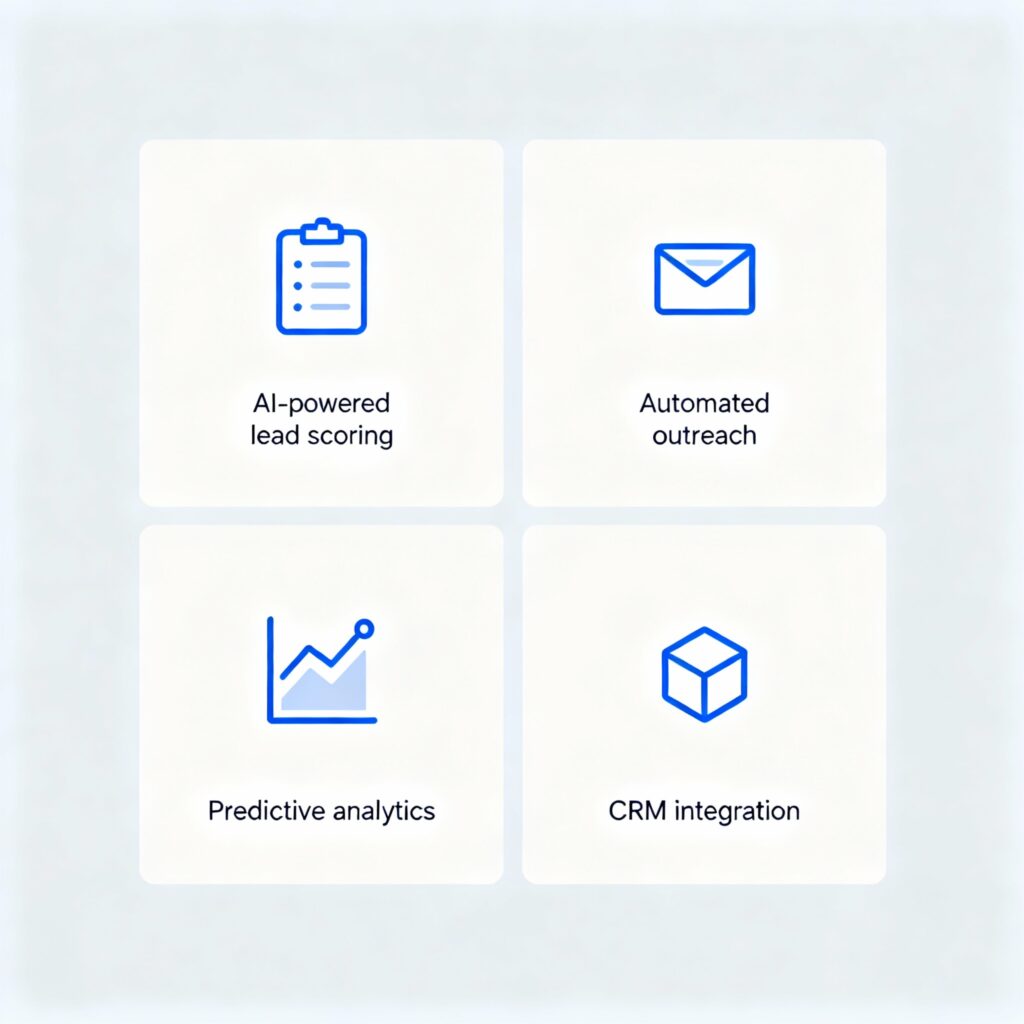
In B2B sales, artificial intelligence (AI) is transforming prospecting by enabling sales teams to identify high-potential leads, personalize outreach, and optimize engagement with unprecedented efficiency. AI-driven strategies streamline the prospecting process, reduce costs, and accelerate client acquisition in a competitive landscape.
Why AI Prospecting Strategies Are Essential
AI addresses critical B2B challenges, such as rising client acquisition costs, lengthy sales cycles, and the need for personalized engagement. By leveraging data analysis, predictive insights, and automation, AI enables sales teams to:
- Target Precisely: Focus on high-intent prospects, as seen in account-based prospecting and predictive prospecting.
- Personalize at Scale: Deliver tailored outreach efficiently, aligning with client-centered and storytelling strategies.
- Optimize Efficiency: Minimize wasted resources, addressing poor prospecting costs and rising acquisition cost concerns.
- Accelerate Conversions: Shorten sales cycles by anticipating prospect needs, as emphasized in shortening sales cycle and follow-up sequence strategies.
These capabilities make AI-driven prospecting indispensable for modern sales success.
1. Predictive Lead Scoring for Precision Targeting
AI analyzes datasets—such as company activities, industry trends, and prospect behaviors—to score and prioritize leads based on their likelihood to convert, aligning with account-based prospecting and predictive prospecting. For example, if your solution enhances logistics, AI might identify retailers with recent supply chain disruptions as high-intent leads. By focusing on these prospects, sales teams reduce wasted efforts, lowering acquisition costs and aligning with rising client acquisition cost strategies.
2. Hyper-Personalized Outreach
AI crafts tailored outreach across channels like email, phone, and social media by analyzing prospect-specific data, such as recent milestones or pain points, as seen in multi-channel and email strategies. Examples include:
- Email: “Hi [Name], I noticed [Company] recently expanded. We’ve helped similar firms streamline operations by 20%.”
- Social Media: Comment: “Great post on [topic]! Our solution addresses that challenge with [result].”
This personalization, leveraging psychological triggers like likability and storytelling principles, builds trust and boosts engagement, aligning with client-centered and relationship-building strategies.
3. Dynamic Follow-Up Sequences
AI optimizes follow-up sequences by predicting the best timing and content based on prospect engagement, as outlined in proven follow-up sequences and nurturing strategies. A sample sequence:
- Day 1 (Email): “Hi [Name], we helped [similar company] achieve [result]. What’s your top challenge?”
- Day 3 (Social Media): Comment: “Great insights on [topic]! We’ve tackled that with [solution].”
- Day 5 (Phone): “Hi [Name], I reached out about [challenge]. Can we discuss your goals?”
- Day 10 (Email): “Here’s a case study on [similar company]. Are you free for a call?”
AI adjusts touchpoints dynamically, aligning with shortening sales cycle and multi-channel strategies to drive efficient conversions.
4. Anticipating Prospect Needs
AI predicts prospect needs by analyzing patterns like company growth or industry shifts, as emphasized in predictive prospecting. For instance, if a prospect’s firm is scaling, AI might suggest outreach focused on scalability: “Hi [Name], with [Company’s growth], our solution can support [specific goal].” This ensures timely, relevant interactions, leveraging psychological triggers like urgency to reduce touchpoints and accelerate conversions.
5. Seamless Marketing-Sales Alignment
AI enhances marketing-sales alignment by sharing data insights across teams, as highlighted in alignment and blending strategies. Marketing can create targeted content—like case studies or industry reports—that sales uses in outreach: “This guide on [challenge] might help [Company].” AI ensures content aligns with prospect needs, boosting engagement and reducing acquisition costs, as seen in rising client acquisition cost and irresistible offer strategies.
6. Proactive Objection Handling
AI anticipates objections like budget or timing by analyzing prospect hesitations, as noted in acquisition and rejected prospects strategies. For example: “I understand [concern]. Our clients saw [benefit] within [timeframe].” Data-backed responses, leveraging social proof and authority triggers, keep prospects moving through the funnel, aligning with follow-up and irresistible offer approaches.
7. Data-Driven Performance Optimization
AI tracks metrics like response rates, cost per lead, and time-to-close, as recommended in ROI measurement and optimization strategies. For instance, if personalized emails yield a 25% response rate versus 5% for generic ones, AI prioritizes personalization. This optimization avoids poor prospecting costs and supports budget-conscious prospecting, as seen in prospecting smarter strategies.
8. Enhancing Referral Prospecting
AI identifies clients likely to refer peers based on their engagement, as outlined in referral strategies. Sales can craft referral outreach: “Hi [Prospect], [Client Name] suggested we connect, as we helped them achieve [result].” This leverages social proof, reduces acquisition costs, and aligns with relationship-building and multi-channel approaches.
9. Cost-Effective Nurturing for Long-Term Wins
For prospects not ready to buy, AI supports long-term nurturing with minimal effort, as seen in nurturing and rejected prospects strategies. Periodic outreach—every 1-2 months—with value-driven content like “Hi [Name], here’s how we helped [similar company]” keeps you top of mind cost-effectively, aligning with relationship-building and rising acquisition cost strategies.
Example AI-Driven Prospecting Sequence
- Day 1 (Email): “Hi [Name], I noticed [Company milestone]. We’ve helped similar firms achieve [result]. What’s your top priority?”
- Day 3 (Social Media): Comment: “Great post on [topic]! We’ve tackled that with [solution].”
- Day 5 (Phone): “Hi [Name], I reached out about [challenge]. Can we discuss your goals?”
- Day 10 (Email): “Here’s a case study on [similar company]. Are you free for a call?”
This sequence uses AI-driven personalization, timing, and multi-channel engagement for maximum impact.
Key Tips for Success
- Leverage Predictive Insights: Use AI to target high-intent prospects.
- Personalize Relentlessly: Tailor outreach to resonate with prospect needs.
- Optimize Timing and Content: Engage when prospects are most receptive.
- Align Teams: Share AI insights for cohesive marketing and sales efforts.
Conclusion
AI-driven prospecting strategies empower sales teams to target precisely, personalize outreach, optimize follow-ups, and enhance efficiency. By integrating with account-based prospecting, social media, email, follow-ups, nurturing, acquisition, marketing-sales alignment, sales funnels, rejected prospects, storytelling, multi-channel prospecting, poor prospecting costs, client-centered prospecting, relationship-building, predictive prospecting, shortening the sales cycle, measuring ROI, psychological triggers, irresistible offers, rising client acquisition costs, proven follow-up sequences, referrals, and technology in sales, these strategies drive sustainable B2B growth. For more on AI’s impact, see our related article: How AI Is Redefining Client Acquisition Strategies.